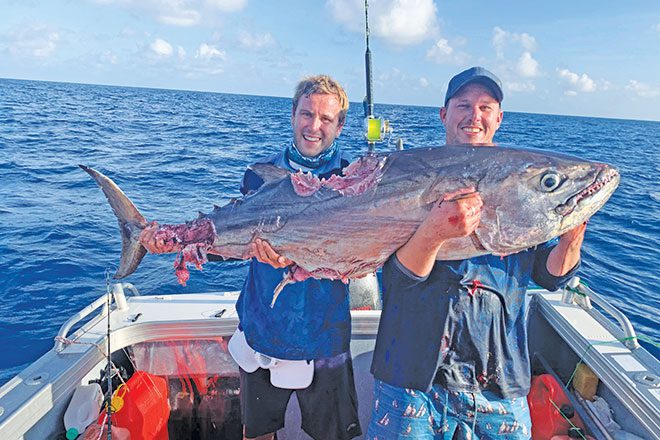There is nothing I enjoy more than heading offshore for several days and nights and camping out in the boat – when the weather allows. Ten tips for extended offshore trips
Sleeping in a small boat is not everyone’s idea of a good time – many people couldn’t think of anything worse – but it’s certainly something I and many other keen fishos around the country love doing.
What boat camping allows is traveling to more isolated areas and fishing for longer.
You can be fishing at the optimum bite times of dawn and dusk instead of traveling to or from your destination.
By boat camping, I’ve been able to explore some amazing locations – from Breaksea Spit to the tip of Cape York and across the Torres Strait, travelling up to 135NM one way – 250km –to explore a new area for a few days.
What you take and how you pack depends on the size of your boat and its layout.
The goal is to be as safe and comfortable as possible, without overloading the boat.
For those getting into extended trips, the following 10 tips may be useful.
One – choose the right crew
Just as important as a capable boat is a capable crew.
It pays to be a bit more select with your crew when doing extended trips.
Keep your crew small – three is a good number in a 6-8m boat – and be sure they can handle a few days on the water.
Spell it out to the crew that it takes time to work out new areas and there can be a lot of sounding around for little reward at times.
You also don’t want someone who is prone to getting seasick or who gets anxious at night when they lose sight of the horizon.
For these trips, you need like-minded fishos who are happy to be onboard.
Two – create a checklist and pack light
When you add up fuel, food, water, beverages, ice, tackle and people, there can be a lot of extra weight on extended trips.
Creating an ‘extended trip checklist’ can help reduce unnecessary gear.
It also ensures you don’t forget anything, particularly if the trip is last minute – which is sometimes the case with weather windows.
Know the capabilities of your boat and avoid putting unnecessary stress on the boat and motor by taking too much stuff.
Three – have a game plan
Before leaving for a trip, spend a bit of time looking at the area on the charts to work out a ‘game plan’.
I use tools such as Navionics, BathyMaps, Garmin’s ActiveCaptain and Google Earth to work out what I want to be doing at various stages of the trip.
The plan may include travel time, bait collection, high spots to troll, a search area for bottom fishing and potential anchorages where there may be some shelter provided by a reef system should the weather turn.
Plans do often change, but it is good to leave home knowing what you want to do, the species you intend to target and have a few starter marks already entered into your GPS from charts you’ve been studying.
 Bush ‘n Beach Fishing Magazine Location reports & tips for fishing, boating, camping, kayaking, 4WDing in Queensland and Northern NSW
Bush ‘n Beach Fishing Magazine Location reports & tips for fishing, boating, camping, kayaking, 4WDing in Queensland and Northern NSW









